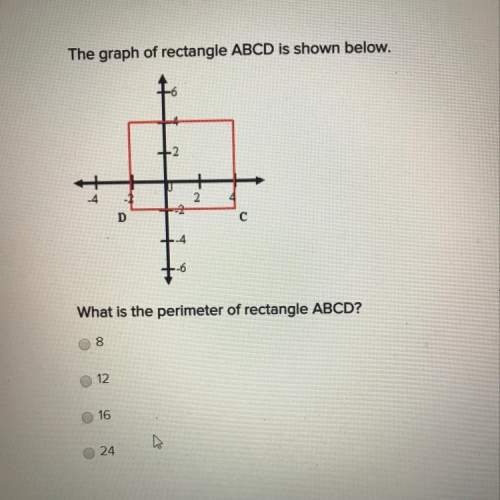
Mathematics, 18.10.2020 22:01 mestaajtv
Considering only functions that have a rate of change less than that represented in the graph, which function has the greatest rate of change?
A. y = 7/6x + 2/3
B. y = 7/5x + 7/5
C. y = 6/5x + 11/5
D. y = 5/4x + 15/4

Answers: 3


Other questions on the subject: Mathematics


Mathematics, 21.06.2019 15:40, aaliyahmaile13
Yo y do yall have 2 stars that means yall wrong bro
Answers: 1

Mathematics, 21.06.2019 21:30, alegora78
He ! a group of farmers planned to clean 80 acres of wheat per day to finish the work on schedule. right before the work started, they received a new piece of machinery that them clean 10 more acres per day than originally planned. as a result of increased productivity in the last day before the deadline they only had to clean 30 acres. how many acres of wheat did the group of farmers have to clean?
Answers: 1

Mathematics, 21.06.2019 23:00, janeou17xn
The equation shown below represents function f. f(x)= -2x+5 the graph shown below represents function g. which of the following statements is true? a. over the interval [2, 4], the average rate of change of f is the same as the average rate of change of g. the y-intercept of function f is less than the y-intercept of function g. b. over the interval [2, 4], the average rate of change of f is greater than the average rate of change of g. the y-intercept of function f is greater than the y-intercept of function g. c. over the interval [2, 4], the average rate of change of f is the same as the average rate of change of g. the y-intercept of function f is greater than the y-intercept of function g. d. over the interval [2, 4], the average rate of change of f is less than the average rate of change of g. the y-intercept of function f is the same as the y-intercept of function g.
Answers: 1
You know the right answer?
Considering only functions that have a rate of change less than that represented in the graph, which...
Questions in other subjects:













